Increasing Productivity is important because Logistics is a performance business
As global supply chains become more complex and the pressures created by shifting demands in both the B2B and B2C spaces increase, consistently delivering on metrics such as speed, cost, and accuracy has become much more complicated.
According to Tim Josupait, Regional Sales Manager at CargoWise, logistics providers must act if they are to keep pace with capacity demands and navigate the considerable disruptions that have affected the industry over the last few years.
“A forwarder may have increased their productivity by say ten percent in the last year, but that doesn’t mean they can sit back and relax. Maybe their competitors also increased their productivity by a similar amount, so now they’re back to square one,” Josupait says.
“Being productive isn’t a one-time destination, it’s a journey. Extracting greater value from processes, improving operational yield, and providing a higher quality of service to customers are all crucial to remaining competitive.”
WiseTech recently surveyed more than 480 logistics and supply chain professionals. Their objective was to understand how logistics companies can drive productivity within their operations, and the crucial role that technology will play in achieving this.
When considering what will have the biggest potential impact on productivity, the research shows that an investment in technology (45%) rates highest, followed by investment in process improvements (34%).
If we look in more detail at investment in technology, real-time visibility and automation of manual tasks are two outcomes that respondents said were their main priorities and would have the most impact on their organization’s productivity.
Multi-platform, disconnected system vs. single platform, connected solution
Access to data is only one part of the equation. To successfully navigate this new normal and respond to disruptions from a position of strength, information must be current to be actionable, and it ideally needs to be available via a centrally managed, single logistics record.
In fact, according to the research done, more than half (54%) of logistics leaders say that technology integration is the most significant challenge post-merger or acquisition.
“Every time you build an integration, it’s something else that you must maintain. So you are maintaining multiple systems, but you’re also then maintaining multiple integrations between those systems,” says Marcia Faria, Business Development Analyst at CargoWise.
“Relying on multiple systems that don’t communicate natively with each other presents risks that can slow down innovation and a company’s growth, as staff are burdened with learning, navigating, and maintaining multiple systems. This extends from the C-suite to IT departments and the operations floor, slowing them down and reducing their capacity to handle other more essential tasks,” says Josupait.
“On top of this, the potential for error increases every time information is re-keyed – especially when you’re facing language, legal, and localization differences – and there is also an increased risk of data breaches, when integrating multiple systems from multiple vendors.”
One system capable of retaining and exchanging data – while offering a platform for customers and trading partners to monitor and maintain their supply chain – can significantly increase productivity and reduce the workload on employees.
There are offerings like CargoWise, where freight forwarders get an out-of-the-box, single platform solution that eliminates the need for integrations between modules. “This removes the need to maintain those integrations, and from day one, you’re getting that visibility and productivity that technology is supposed to provide”, says Josupait.
Substantial benefits of moving to electronic documents
In addition to everyday transactions such as orders or invoices, electronic data exchange in logistics ensures the operational interaction between business partners (buyers, suppliers, 3PL warehouses, forwarders, etc.) at all stages of a shipment’s lifecycle.
“Speed has always been a priority for logistics companies,” says Aurelie Zengerlin, Business Development Executive at WiseTech Global. “You need to have access to your documents at a moment’s notice, from air waybills and bills of lading to manifests and cargo loads, purchase orders, invoices and much more.”
According to Zengerlin, in the face of lockdowns, many logistics companies who had resisted moving to a paperless supply chain saw their operations slow down significantly, with access to hard copy documents and records in the office no longer a viable option.
Angela Gadaev, International Logistics Product Portfolio Manager at WiseTech Global, agrees and says that those companies that had started to adopt more automated and paperless processes, were on the front foot when the pandemic hit.
“We know logistics providers have to manage incredibly high volumes of disparate, non-digitized data and that processing these paper documents incurs costs and takes time,” Gadaev says.
“Moving to electronic documentation reduces the hours spent managing, filing, searching, updating, and sharing manual documents while trimming costs at the same time. It keeps all your information in a secure location, with flexible visibility controls based on a company, branch, or department, so only approved individuals or teams can access specific files.”
Challenges moving to paperless
Concerns relating to a lack of standardization of electronic documents is one of the obstacles slowing down a broader adoption among carriers and companies in the logistics sector.
Of course, another factor that may slow down the adoption of electronic documentation is internal resistance.
According to Scott McCorquodale, Head of Airline Connectivity at WiseTech Global, it can sometimes be difficult to convince companies to break away from the traditional way of doing things and adopt new tools that involve changing internal models or investing in technology to create, transfer, and store documentation. However, if this is overcome, it can help the business move forward.
“In simple terms, we can often put this reticence down to fear and uncertainty,” he says. “A safe and steady evolution has always been preferable to a drastic revolution, but with many logistics leaders feeling like resistance to change is the biggest impediment to digital success, it’s time for all of us to shift our thinking.”
Paperless is gaining steam
However, it is slowly evolving, at least in some of the world’s more developed and significant segments.
In 2020, the International Air Transport Association (IATA) announced an industry goal to achieve 100 percent electronic air waybills (eAWB) by the end of 2022. This initiative is also pushing cargo toward digitization. For example, Lufthansa Cargo announced in February 2020 that it would follow IATA’s lead, beginning with the summer schedule on March 27, 2022, when all shipments on feasible lanes needed to be carried as eAWB only.
Additionally, in August 2024, the European Union’s Electronic Freight Transport Information is slated to go into effect. This regulation is expected to provide a legal framework for authorities to accept freight transport information in electronic form as a valid format, eliminating the need for documents to be printed.
According to Zengerlin, lost productivity isn’t only about what employees are not doing well, it’s also about what they could be doing a great deal more efficiently if people are redeployed into areas where they are needed, rather than bogging them down in paper processes and data transfer tasks, much of which can be automated.
“Logistics is a process-driven industry. Every day, tasks are being repeated over and over – with varying degrees of manual or expert input,” she says.
“Eliminating labor-intensive, repetitive, error-prone activities that rely on physical paperwork is always the best option and automating and accelerating such tasks will yield immediate and significant benefits to your business.”
“What happens is your staff will be liberated from the time-consuming, repetitive parts of their responsibilities to focus more on improving customer service and broadening their skillsets. Space is created for them to be able to draw on their accumulated knowledge of the business and understanding of your clients – rather than their ability to find pieces of paper or key in data” she concludes.
With all this in mind, there has never been a more prudent time to update digitally. And with the right investment in the right technology, you can unlock new productivity gains and meet your customers’ needs now and in the future.
As a Platinum accredited CargoWise service provider, we at SFL provide CargoWise Consultancy and Implementation regardless of the size or location of your business. In addition, our supporting features such as Helpdesk, Instant Pricing Calculator, Business Intelligence tool to manage multiple CargoWise projects, and Learning Portal all ensure that your team has the support it needs to shift to more productive options.
To learn more, you can book a free consultation call with us, here.



